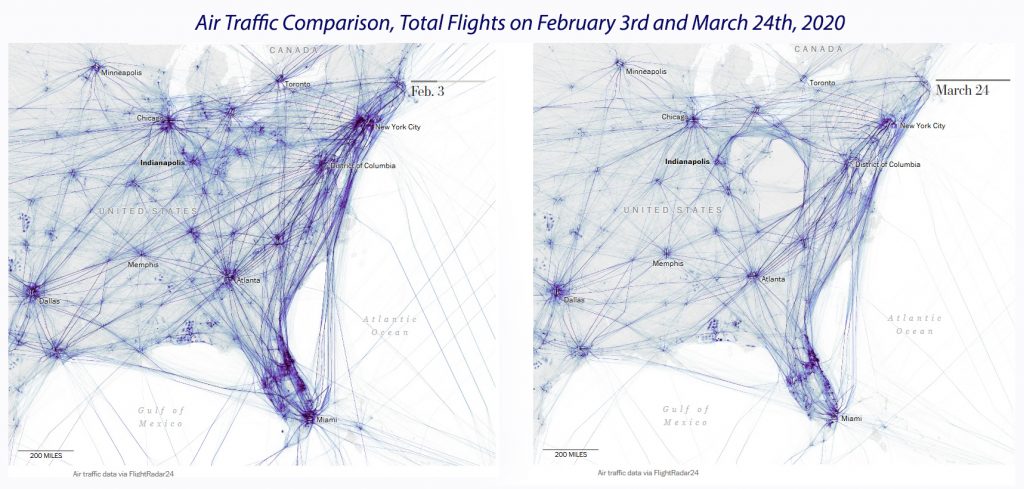The COVID-19 pandemic has caused a reduction in air traffic. This reduction has had at least two impacts so far, one relating to the exhaust from aircraft engines and the other to weather forecasts.

Exhaust from aircraft engines can be seen sometimes as condensation trails, or contrails. The exhaust of an aircraft contains both gas and tiny particles called aerosols. Both of these are important in the formation of contrails. Contrails form when water vapor condenses and freezes around the small particles that exist in aircraft exhaust.
The balance between Earth’s incoming sunlight and outgoing heat drives climate change. Contrails trap energy coming off the earth and atmosphere below that would otherwise find its way to space. Persisting contrails can spread into extensive cirrus clouds that tend to warm Earth, because they reflect less sunlight than the amount of heat they trap.
In addition to transporting people, airlines make measurements of the environment as they fly, including observations of temperature, wind speed and wind direction. Meteorologists incorporate these observations into weather forecast models as initial conditions. Of particular importance are the observations of the wind.
The National Weather Service uses approximately 250 million of these measurements every year. The data provided by U.S. airlines dropped by half at the end of March. There have been studies of how these observations impact a weather forecast, with some demonstrating that aircraft reports are second only to satellite data in their impact on forecasts.
The recent reductions caused by the pandemic have impacted the forecasting of how weather systems move around the globe. A study by the European Centre for Medium-Range Weather Forecasts concluded that removing all aircraft data from weather models reduces accuracy by 15%.
Steve Ackerman and Jonathan Martin, professors in the UW-Madison department of Atmospheric and Oceanic Sciences, are guests on WHA radio (970 AM) at 11:45 a.m. the last Monday of each month.

